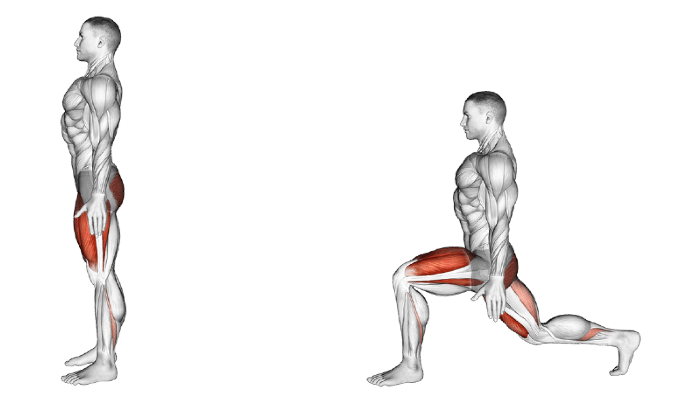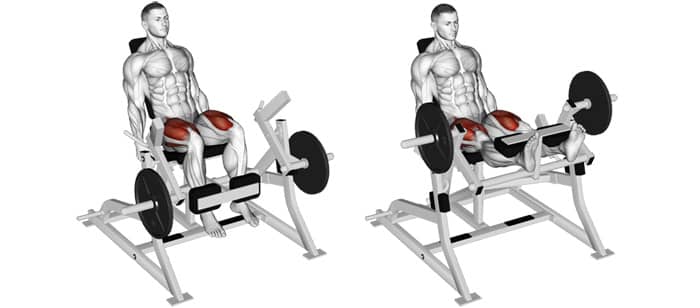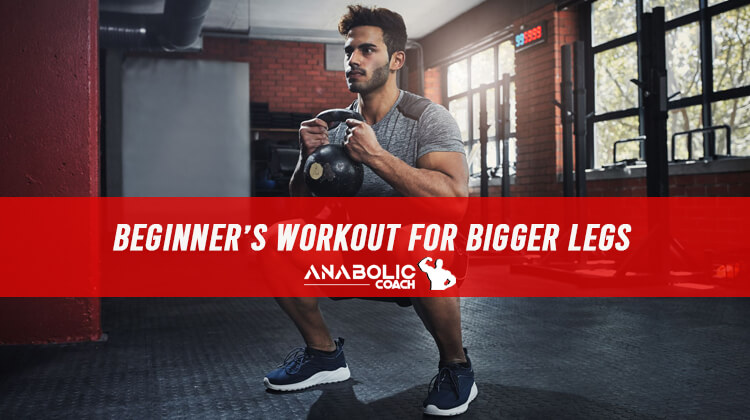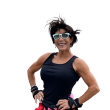Leg day is always tempting to skip because of the dreaded delayed onset skeletal muscle soreness that often follows a strenuous workout.
However, it must be said that no weight training program is complete without a weekly leg workout. In this article, we highlight six classic beginner’s workouts for bigger legs.
Why You Need Leg Workouts
If you care about your health and appearance as a whole, you should make leg training a top priority.
Workouts that focus on the legs strengthen the body’s major muscle groups and promote efficient movement in everyday life. Injury and the aggravation of persistent diseases like diabetes, heart disease, and arthritis are reduced when the lower body is in good shape.
Leg workout is important for the following reasons:
Increases production of hormones
Many hormones can be released in response to leg exercises. Leg exercises promote the release of stress hormones, testosterone, and growth hormone (HGH).
The stress hormone cortisol boosts your metabolism and aids in the breakdown of fat. Boosting your testosterone levels can aid in mending torn muscle fibers and constructing new ones. Growth hormone (HGH) aids in the development of muscle, strengthens the immune system, and speeds up the body’s fat-burning processes.
Promotes equilibrium and muscular balance
Even more gains can be made by performing unilateral leg exercises. The need to use both sides of the body equally posed by working each leg independently aids in body alignment and the correction of muscular imbalances. It prevents your stronger, more mobile, or more flexible dominant leg from compensating for your weaker, less mobile, or less flexible non-dominant side.
Promotes core engagement
You can strengthen your core muscles, improve your balance, and reduce your risk of injury by performing single-leg exercises. Working one side of the body can stimulate the same muscles on the other side, which aids in rehabilitation.
This form of indirect stimulation is particularly useful for bolstering a weak area on the opposite side of the body. When performing unilateral exercises, it is recommended that you begin with the less dominant side.
Other benefits of leg workouts include:
- Improving posture
- Building muscles
- Toning and sculpting your leg
- Reducing joint pain
- Improving your overall health and fitness levels
- Strengthening your bones
- Strengthening your core muscles
- Improving stability, mobility, and providing you with a better full range of motion
- Reduces back pain
- Managing stress

Six Leg Workouts for Beginners
Below are six leg workouts that beginners can try out today. However, it is advisable that you consult with a trainer before you do.
Barbell Squat
After mastering bodyweight squatting and exercises using dumbbells or kettlebells during a goblet squat, you should progress to the barbell squat. It’s a killer move that will do wonders for your legs if you execute it properly even as a beginner.
Standing with your feet shoulder-width apart and toes turned slightly outward, unrack the bar and rest it on your rear shoulder muscles. Make sure you lift a weight that isn’t too heavy at first, as you need to get to grips with the workout and the proper form needed to execute it safely.
To execute the barbell squat, first, sit back as if reaching for a chair behind you, then bend your knees until your thighs are at least parallel to the floor, and finally, push yourself up to a standing position by driving through your heels.
Dumbbell Lunges
An area suitable for making a single, large leap is required before you begin with the Dumbbell Lunges exercise. Pick a set of dumbbells whose weight allows you to complete all of the reps in the exercise sets you’ve selected. It is always advisable that beginners start off dumbbell lunges with a light weight.
When starting from a standing position, take a large step forward with one leg and bend both knees to a 90-degree angle without letting your back knee touch the ground. To stand up, drive back through the front heel. Maintain a straight back and strong abdominal muscles for the duration of this exercise.

Leg Press
The leg press is another machine exercise that targets your quads, glutes, and hamstrings all at once, unlike the leg extension and leg curl exercises.
To begin this workout, place your feet shoulder-width apart on the plate and lean back on the machine. Let go of the handles, allowing your legs to support your body, and then slowly bring your feet up toward your chest. Make sure your knees are not locked out as you drive them back up. Always work with moderate weights as a beginner then gradually increase the weights as you perfect your form and build confidence in executing the exercise.
Lying Leg Curls
Unless you have an exceptionally well-equipped home gym, you should perform the leg curl on a weighted machine at your local gym.
One of the best ways to build muscle in your hamstrings is by performing leg curls, which is why you should do them. You can perform either Seated or Lying Leg Curls. With the latter you need to visit a gym which offers machines that allow you to lie on in order to properly execute the workout.
While lying flat (on your belly) on the leg curl machine, place the padded weights just below your calves. Hold onto the side handle bars while your body is flat on the machine. Curl up your legs as far up as you can with the weight, then lower it and repeat as many times as necessary.
Leg Extensions
This simple weight-machine exercise targets the quadriceps and can be performed with light weights to avoid knee injury. Prop yourself up straight against the backrest of the leg extension machine and position the pad so that it rests on the upper part of your shins, above your ankles.
By holding the side bars, you can extend your legs in front of you and work your quads rather than your calves and hamstrings to power the exercise.

Standing Calf Raises
Calves are not the easiest muscles to target in the body, but this simple leg exercise is about the best way to do so. Calf raises are essential for any runner or athlete, whether you do them in the gym or at home.
Stand on the balls of your feet, lift your heel until you’re literally standing on your toes, and then return to a normal standing position. To increase the difficulty of calf raises, you can either add weight or perform the exercise with your toes resting on the edge of a step, which provides more freedom of motion when you execute the standing calf raise.
A final word
Make sure that you execute the workout for bigger legs mentioned in this article in the presence of a qualified coach. There is no gain in trying out these workouts without first perfecting your form. Poor form can lead to injuries, so you should always have a friendly neighborhood coach to offer guidance. If you need more information on how to execute these exercises, you can get in touch with us here today.


